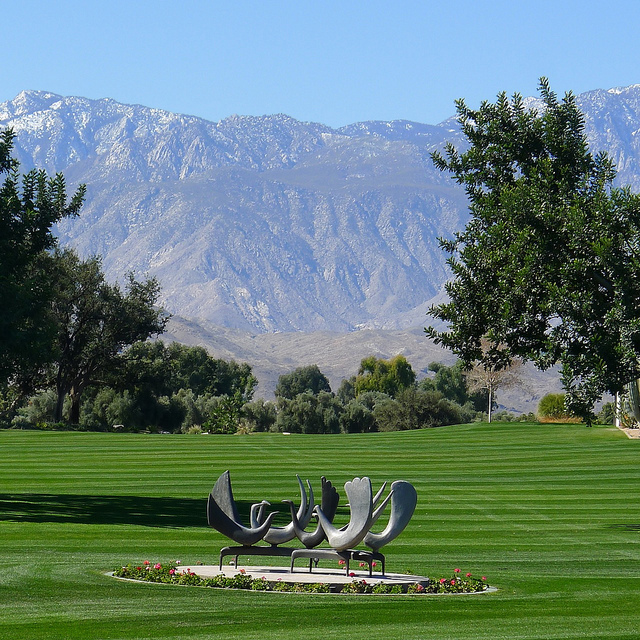China may be gaining the strategic upper-hand in the ongoing scramble in the South China Sea thanks to its newly-built artificial islands, but it is facing increasing backlash in the region. Neighboring states as well as external powers have stepped up their diplomatic pressure on Beijing, while coordinating their efforts at safeguarding freedom of navigation in the area. Crucially, the Philippine Supreme Court last month cleared the main obstacle to the implementation of the Enhanced Defense Cooperation Agreement (EDCA), allowing the United States to augment its military footprint in the Philippines.
Beijing’s relentless pursuit of its claims is undermining relations with a host of countries, which have come to welcome a greater U.S. military footprint in the Asia Pacific. The region is gradually witnessing the start of what the late Gerald Segal characterized as a “constrainment” strategy – a calibrated push against perceived manifestations of Chinese revanchism. In particular, President Barack Obama’s February 15-16 summit with leaders of the Association of Southeast Asian Nations (ASEAN) at the Sunnylands resort in California represents a crucial opportunity to strengthen U.S. regional leadership and mobilize greater multilateral pressure on China.
Regional Pushback
For years, a combination of fear, economic dependence, and (primarily U.S.) strategic ambivalence provided China carte blanche to dictate the trajectory of the South China Sea disputes. But Beijing’s massive reclamation activities across the Spratly Islands have shaken the region out of strategic stupor, prompting increasingly robust countermeasures by other regional players.
The final months of 2015 saw a diplomatically isolated China that had to grapple with a seemingly coordinated diplomatic pushback. During the November 2015 Asia-Pacific Economic Cooperation summit in Manila, Xi stubbornly rejected any discussion of the South China Sea disputes. But China’s reclamation activities were very much at the center of bilateral discussions between the Philippines and other countries, including the United States, Japan, Australia, and Vietnam.
Shortly after arriving in the Philippines, Obama made a highly symbolic visit to the Philippine Navy’s flagship, the BRP Gregorio del Pilar, which was at the heart of the Sino-Philippine standoff over Scarborough Shoal in 2012. Obama reiterated America’s “ironclad commitment” to its Southeast Asian ally. Vietnam signed a new strategic partnership agreement with the Philippines, with a focus on maritime security cooperation, while Japan signed a strategic agreement that allows for the transfer of military hardware to the Philippines. Other countries such as South Korea and Russia also discussed expanding defense ties with the Philippines.
During the ASEAN and East Asia Summit meetings later that month, the Philippines along with a number of major powers reiterated their growing worries over China’s reclamation activities and their implications for freedom of navigation and overflight in the region. Despite China’s vehement opposition to any discussion of the disputes, the ASEAN foreign ministers renewed their advocacy for a legally-binding code of conduct in the South China Sea.
With the Philippines expecting a favorable verdict in its arbitration case against China in the coming months, there are discussions of a potential “legal multiplier” as neighboring countries such as Vietnam and Indonesia also threaten similar suits against China. Crucially, the United States has joined the fray by conducting freedom of navigation operations (FONOPs) within the territorial sea of Chinese-occupied features.
Key ally Australia has stepped up maritime patrols in the area, reiterating Canberra’s concerns over threats to freedom of navigation. Thanks to last year’s passage of a controversial collective security bill, the Japan Maritime Self-Defense Forces could also soon play a crucial role in asserting freedom of navigation in the area. The U.S.-Philippines EDCA will facilitate the expansion of bilateral military exercises and enhance interoperability between the two countries’ armed forces, which are also contemplating joint patrols in the Spratlys.
Courting Southeast Asia
The Obama administration has already overseen a significant deepening in U.S.-ASEAN relations. Under Obama’s watch, Washington signed the ASEAN Treaty of Amity and Cooperation; stepped up multilateral engagement with a liberalizing Myanmar; appointed the first permanent mission by an outside country to the ASEAN Secretariat; established the Lower Mekong Initiative; and fortified strategic ties with emerging partners such as Vietnam. As the Obama administration enters its last year in office, it is doubling down on operationalizing the much-touted rebalance to the Asia Pacific, especially the deepening of ties with Southeast Asia.
The ultimate aim of U.S. strategy toward the South China Sea is to enhance America’s regional leadership and increase the costs to China of its maritime assertiveness, leading to a recalibration in Beijing’s strategic calculus. During the upcoming Sunnylands summit, President Obama is expected to push for a regional consensus on the necessity of preserving freedom of navigation in the South China Sea – a barely-veiled rebuke against China’s assertiveness in the area.
Last month, Secretary of State John Kerry made a high-profile visit to Laos and Cambodia, often considered Beijing’s strategic backyard. Kerry managed to garner the support of Laos, which recently underwent a potentially seismic leadership change and is the current chair of ASEAN, on the issue of South China Sea. In both Laos and Cambodia, Kerry offered economic incentives in the hopes of dampening their heavy dependence on China.
The Sunnylands summit will also have a significant economic dimension, with Obama expected to push for more robust trade and investment ties with the region. In particular, he is expected to discuss the prospect of the major ASEAN economies of Indonesia, Thailand, and the Philippines joining the Trans-Pacific Partnership agreement. Indonesia and the Philippines have expressed interest, while Thailand’s junta is still wavering. Getting those economies on board will go a long way in boosting U.S. economic leadership in Asia.
